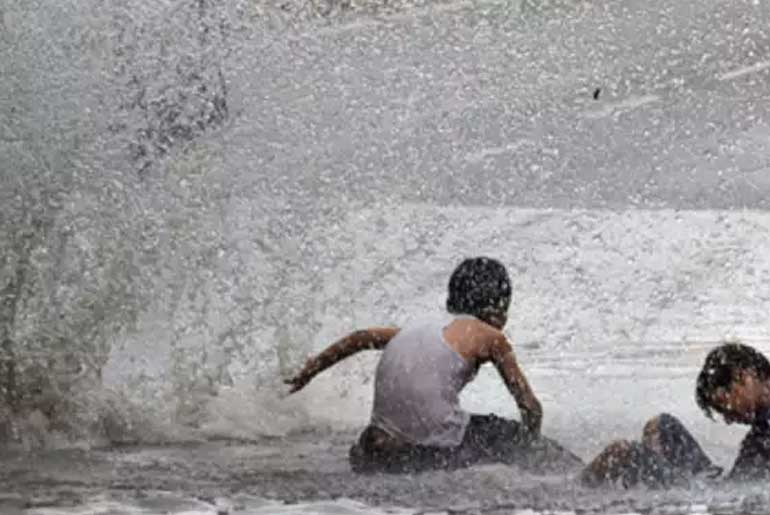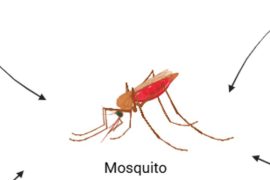The arrival of the monsoon season brings relief from the heat but also introduces a host of health challenges for children. This period is marked by an increase in viral infections, mosquito-borne diseases like dengue and malaria, gastrointestinal illnesses from contaminated food and water, and skin infections due to increased humidity. These conditions often result in frequent visits to pediatricians and absences from school, causing significant concern and inconvenience for parents and caregivers.
To mitigate these risks, it’s crucial to focus on preventive measures such as mosquito control, ensuring clean drinking water and hygienic practices, and promoting a nutritious diet to boost immunity. Prompt medical attention at the first sign of illness is essential to manage these monsoon-related ailments effectively and minimize their impact on children’s health and daily routines.
Viral infections:
Viral infections during the monsoon season can affect children’s respiratory and gastrointestinal systems, leading to symptoms such as fever, cold, cough, throat irritation, vomiting, and diarrhea. While many of these infections are typically mild and resolve on their own, they can occasionally lead to complications like pneumonia and dehydration, which are more concerning in infants and newborns. It’s important to avoid self-medication, especially with antibiotics, as this can lead to side effects and contribute to antibiotic resistance—a serious global health issue.
If a child experiences high fever persisting for more than three days, persistent vomiting, profuse watery diarrhea, reduced urination, rapid or difficult breathing, or difficulty feeding, it’s crucial to seek medical attention promptly. Prevention measures such as maintaining good hand hygiene, ensuring food and water safety, and immunizing children with the flu vaccine can significantly reduce the risk of viral infections. Annual flu vaccination is recommended for all children aged 6 months to 5 years to protect against influenza strains that can cause severe respiratory illness, particularly in vulnerable populations like young children and those with asthma.
Infective Diarrhea:
Children may experience multiple watery, foul-smelling, and sometimes blood-stained stools, often accompanied by high-grade fever and vomiting. This can lead to dehydration, which is a significant cause of mortality. Treatment involves appropriate antibiotics along with probiotics and zinc to manage symptoms and prevent complications.
- Typhoid Fever: This bacterial infection, commonly transmitted through contaminated water and food, presents with symptoms such as prolonged fever, abdominal pain, headache, and loss of appetite. Vaccination with two doses of the typhoid vaccine can reduce the severity of the infection and its associated complications.
- Hepatitis A and E: These viral liver infections spread through contaminated drinking water and uncooked food, causing symptoms like fever, vomiting, abdominal pain, and jaundice. Hepatitis A can be prevented with two doses of the vaccine, providing full protection, whereas no vaccine is currently available for Hepatitis E.
- Malaria: Transmitted by Anopheles mosquitoes, malaria manifests with high fever, chills, and rigors typically 10-12 days after a mosquito bite. Severe cases can lead to life-threatening complications affecting various organs. Prevention focuses on avoiding mosquito bites through repellents, nets, and appropriate clothing, while eliminating stagnant water where mosquitoes breed.
- Dengue Fever: Spread by Aedes mosquitoes during the day, dengue fever presents with high fever, body aches, headache, and potentially a rash. In severe cases, particularly in those with a history of dengue, it can progress to dengue hemorrhagic fever, a medical emergency requiring hospitalization. Preventive measures mirror those for malaria, and a vaccine is anticipated soon.
- Japanese Encephalitis (JE): This viral infection, transmitted by Culex mosquitoes found in rural areas, primarily affects young children, leading to fever, convulsions, and potentially coma or severe neurological impairments. Vaccination with two doses during childhood provides lifelong immunity against JE.
Preventive measures such as vaccinations, mosquito control, and maintaining hygienic practices are crucial during the monsoon season to protect children from these potentially serious infections. Prompt medical attention is essential if any symptoms of these illnesses appear to ensure timely treatment and management.
In areas prone to flooding, particularly during the monsoon season, there is a heightened risk of leptospirosis, a bacterial infection transmitted through contact with water contaminated by the urine of infected animals such as dogs and rodents. Symptoms typically include high fever with chills, severe headache, vomiting, diarrhea, and muscle pains. Early diagnosis and treatment with antibiotics are crucial to prevent complications such as kidney damage or meningitis. Prevention involves avoiding contact with potentially contaminated water, wearing protective clothing, and maintaining hygienic practices. Awareness and timely medical attention are essential for managing leptospirosis effectively in affected areas.
During the monsoon season, increased humidity contributes to a higher incidence of bacterial and fungal skin infections. Daily baths and wearing loose cotton clothing can help maintain skin health by reducing moisture and promoting ventilation. In areas with dense vegetation prone to flooding, snake bites become more common as snakes are displaced from their habitats. It’s crucial to avoid bushy areas, wear appropriate clothing and shoes, and seek immediate medical attention if bitten to receive prompt and appropriate treatment. Awareness and preventive measures are key to minimizing the risks associated with skin infections and snake bites during the monsoon season.
Preventive strategies for monsoon maladies:
- Food and water borne monsoon ailments
1.Hand washing.
2.Safe storage of food.
3.Avoid cut fruits and unhygienic eating places
4.Ensure safe potable water.
- Mosquito borne diseases
1.Proper clothing
2.Mosquito nets and repellants
3.Prevent water logging in coolers, tyres, garden and all around houses.
- Vaccine preventable ailments
- Typhoid
2. Hepatitis A
3. Rotavirus
4.Japanese encephalitis
- Malaria and Dengue vaccines eagerly awaited
Disclaimer:
The information contained in this article is for educational and informational purposes only and is not intended as a health advice. We would ask you to consult a qualified professional or medical expert to gain additional knowledge before you choose to consume any product or perform any exercise.








